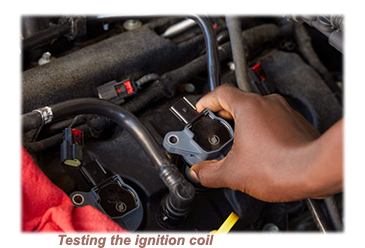
 Maintaining the ignition system in a classic car is important for the overall performance and reliability of the vehicle. Here are a few tips for maintaining the ignition system in a classic car:
Maintaining the ignition system in a classic car is important for the overall performance and reliability of the vehicle. Here are a few tips for maintaining the ignition system in a classic car:
 Check the spark plugs: Regularly inspect the spark plugs for wear and tear, and replace them as needed. Old spark plugs can cause poor engine performance and can be a cause of misfires.
Check the spark plugs: Regularly inspect the spark plugs for wear and tear, and replace them as needed. Old spark plugs can cause poor engine performance and can be a cause of misfires.
It is essential to the overall operation of the engine that spark plugs that have been properly placed and adjusted.
Check the ignition coil: The ignition coil is responsible for converting the low voltage from the battery into the high voltage needed to fire the spark plugs.
High-tension current, often as high as 45,000 volts, is generated from the low-tension current (12 volts) held in the car battery. The spark plugs receive this high voltage from the ignition coil and release it as a spark at the correct time, igniting the air/fuel mixture in the combustion chamber. Ignition coils are essentially wire wound transformers that are wound around an insulator. A classic car owner should be on constant look for signs of wear or damage, and replace it if necessary.
Check the rotor arm: The rotor, along with the distributor, are responsible for distributing the high voltage from the ignition coil to the spark plugs.

 The rotor arm is responsible for conducting electricity from the ignition coil to the various contact points in the engine cylinders.
The rotor arm spins as current flows from the ignition module through the coil and into the cap, making contact with the various touchpoints or posts that are wired to the spark plugs.
The rotor arm is responsible for conducting electricity from the ignition coil to the various contact points in the engine cylinders.
The rotor arm spins as current flows from the ignition module through the coil and into the cap, making contact with the various touchpoints or posts that are wired to the spark plugs.
Since the rotor arm does not make contact with these posts (the charge must leap over a narrow space) the ignition mechanism will not function if the rotor is knocked loose or if the rotor stops turning.
Be sure to see a mechanic if the rotor arm behind the distributor cap begins to smoke, burn, or otherwise becomes difficult to remove due to overheating.
Check the wiring: Check the wiring in the ignition system for any signs of wear or damage, such as cracked insulation or corroded terminals. Replace any damaged wiring.
Check the timing: Make sure the timing is set correctly, as an incorrect timing can cause poor performance and increased fuel consumption.
 The ignition timing procedure is crucial to the overall efficiency of an engine. So it stands to reason that there must be methods to manipulate the ignition timing in order to improve vehicle efficiency. Changing the ignition timing ahead or behind is the best technique to improve engine performance.
The ignition timing procedure is crucial to the overall efficiency of an engine. So it stands to reason that there must be methods to manipulate the ignition timing in order to improve vehicle efficiency. Changing the ignition timing ahead or behind is the best technique to improve engine performance.
When it comes to keeping an engine running smoothly, ignition timing is crucial. Long-term engine damage can occur if the spark plug fires too early or too late during the compression stroke.
It's important to keep in mind that different classic car models have different ignition systems, and it's recommended to check the owner's manual or consult with a specialist to know the right maintenance method for the system in the vehicle.
Back to the homepage- and don't spare the horsepower.
br4




